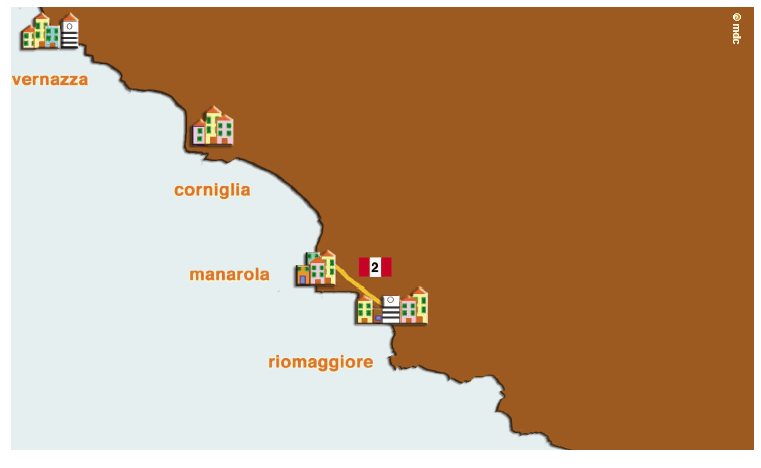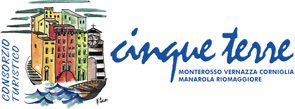Path no. 2, more well known as the Sentiero Azzurro (Blue Path), is one of the most appreciated pedestrian routes of the whole peninsula, both because it does not present particular difficulties and for the many views given to the millions of walkers that walk there in all seasons of the year. This is an itinerary which existed in Medieval times (except the segment which coincides with the Via dell’Amore (Walk of Love), dating back to 1900), for centuries it was the only road between the inhabitants of the coast. From Sentiero Azzurro (Blue Path) also dozens of mule-tracks leave which go up to the crest of the hill, tracing a tight network of routes crossing dry stone walls, small populated nuclei and Santuari (Sanctuaries). Even though it is possible to walk along the path in a single day, in order to gather better the spirit of the Cinque Terre it is however recommended to split up the walk into stages.
On leaving Monterosso railway station one takes the road on the left which goes towards the old village. From the central square of the village one goes up towards Hotel Porto Roca, from which leaves a steep flight of steps in the midst of allotments cultivated with lemons (the real origin of the Sentiero Azzuro which takes walkers up high. From here the mule-track is transformed into a route characterised by lots of ups and downs in amongst the olive trees, vineyards, beds of torrents, cottages and terraced land. The path, sometimes straight and difficult to pass along due to the numerous landslides which happen now and again, for part of the way one goes along a sort of embankment, to then gradually descend towards the sea until, after having gone over Costa Linaro and Costa Mesorano, two secondary crests, and after having passed by the local cemetery, the path ends in front of the chemist shop at Vernazza.
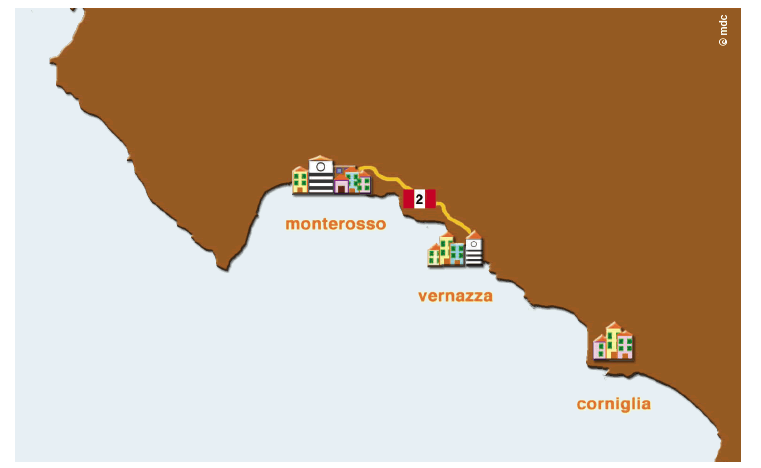
From the port of Vernazza one goes up along an “arpaia”, the typical flight of stairs of the village, towards the Medieval tower which looks over the village, near which the Sentiero Azzurro recommences. The itinerary takes up again in the midst of rich vegetation of agavi and figs from India, going along geological formations in which are legible layers and formations of millions of years. From here one continues until one reaches Prevo, a small populated nucleo formed by a dozen coloured houses, to then continue on the path. One passes by old bridges which go over small streams, like the Rio della Groppa and go along past allotments and cultivated fields often abandoned, until one meets the main road which takes one to the historical centre of Corniglia through a narrow street which passes behind the built up area and in front of the church of San Pietro.
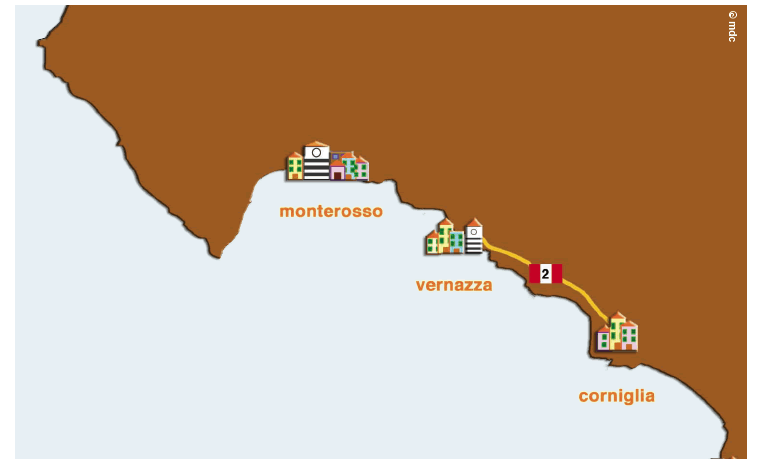
From Corniglia one takes the Scala Lardarina (stair), a flight of 33 steps which reaches the train station under which starts an embankment where the single track railway line once ran and where until a few years ago there were numerous houses which were then destroyed in a fire. From here one continues until reaching the real path which runs parallel to the beach underneath. After having gotten over a wide heap of stones, originating from a landslide which made the path not passable, one passes in front of a chapel representing the Virgin to then descend, after having gone round the cemetery of Manarola bearing some verses of Cardarelli written in block capitals on the wall, up to the seafront of the village. Then one goes up again towards the historical centre and one takes a tunnel on the right which ends in front of the railway station.
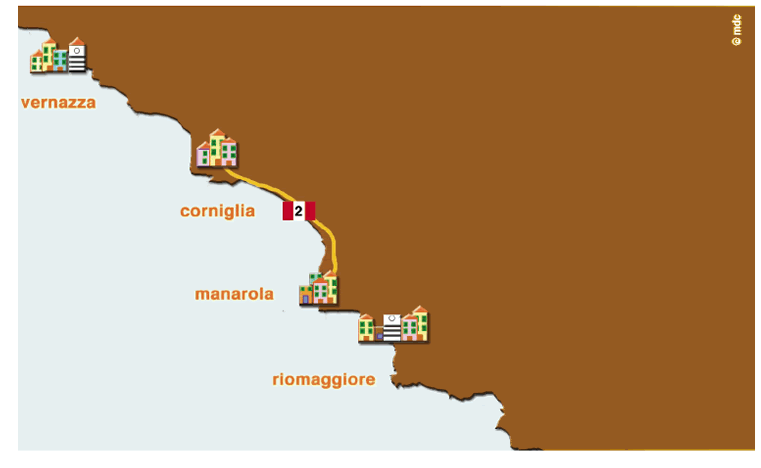
Behind Manarola station one goes up a stair that goes to the Sentiero Azzuro (Blue Path) which coincides here with the Via dell’Amore (Walk of Love), the famous itinerary dug into the rock, built between the I and II World Wars during the excavation of the railway tunnels between Manarola and Riomaggiore and between Riomaggiore and La Spezia. The work came about from the necessity to make deposits of explosives far away from the houses, very quickly it became famous all over the world thanks to its panoramic position peaking on to the sea which give priceless romantic moments. The route, after a short stretch under an artificial arcade, offers a view of a wide variety of exotic plants to a hill walker such as agave and figs of India, apart from interesting geological formations in various layers. The walk ends in front of Riomaggiore railway station.
